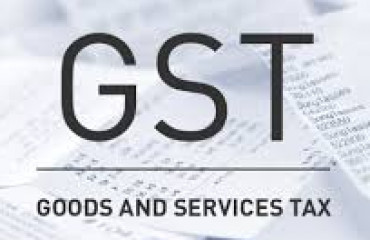
The trend of robust goods and services tax (GST) revenue collection of ₹1.51 trillion a month on average in the June quarter brings states’ GST revenue receipts closer to the level of revenue protection they seek, according to the revenue secretary Tarun Bajaj.
The trend of robust goods and services tax (GST) revenue collection of ₹1.51 trillion a month on average in the June quarter brings states' GST revenue receipts closer to the level of revenue protection they seek, according to the revenue secretary Tarun Bajaj.
The Centre gave states GST compensation for five years till 30 June to meet the gap between their actual revenue receipts and their assured revenue in the GST regime—a 14% annual growth in revenue over the base year of FY16. However, this revenue protection scheme has ended, and discussions in the GST Council on states' demand for an extension remain inconclusive.
"Our average GST collection is ₹1.51 trillion. If somehow we reach ₹1.55-1.6 trillion, then the compound annual growth rate itself becomes close to 12% from the base year. This year, we are going to give a compensation of more than ₹1 trillion. About ₹87,000 crore has already been released this year. We will give around ₹20,000-30,000 crore more," Bajaj said in an interview.
The average monthly GST collection of ₹1.51 trillion is an improvement of 37% over what was collected at the same time a year ago. GST collections in FY22 of ₹14.8 trillion is an improvement of over 30% from what was collected in FY21, a trend that gives the central government confidence that states will be able to manage without GST compensation.
Bajaj expressed confidence in meeting the revenue collection targets in FY23 in spite of the reduction in excise duty on petrol and diesel.
"We will meet the target. Yes, excise duty has been cut sharply. We are working on GST. This time, first-quarter GST collection has grown by 37%, and the average for the first quarter is ₹1.51 trillion," Bajaj said, indicating a possible 25-30% annual improvement in GST collections in FY23. The government will also get some revenue from the cess imposed on crude oil and the export of petrol and diesel last week. The Centre's direct tax receipts are also strong. Net direct tax collections have seen a 49% improvement in FY22 from the year-ago. Up to mid-June this fiscal, net direct tax collection rose 45% to ₹3.39 trillion from a year ago.
For the Centre, an improvement in tax revenue receipts will be a shot in the arm, as it helps compensate for tax cuts on auto fuel and any slippage in meeting disinvestment targets.
There are, however, uncertainties. "We keep our fingers crossed. The world economy should keep doing well, the Russia-Ukraine (conflict) should get sorted out, prices of commodities including petrol and diesel should come down," Bajaj said.
Last month, the Council decided to withdraw several tax exemptions and correct tax anomalies to improve efficiency in the GST system. The revenue secretary said the decision to withdraw the tax exemption on certain pre-packaged and labelled items and place them in the 5% slab was based on feedback from states that they had lost out on revenue collection when they shifted to the GST regime. The Council's decision was to prevent the abuse of the arbitrage offered by the tax exemption on unbranded items. Several entities used labels on their pre-packaged products to take advantage of the exemption available to the unbranded products.
Bajaj explained that there was feedback that states were getting taxes in the value-added tax (VAT) regime on these items. Because there was an arbitrage between branded items and the rest in the GST regime, a lot of people who would otherwise have used brand names started using this route to avoid taxes. "Some states gave us revenue figures which they were getting under VAT regime. These were very large figures. It is not that these companies never paid taxes," Bajaj said. The withdrawal of tax exemption will also prevent litigation in addition to simplifying the tax system, Bajaj said.
